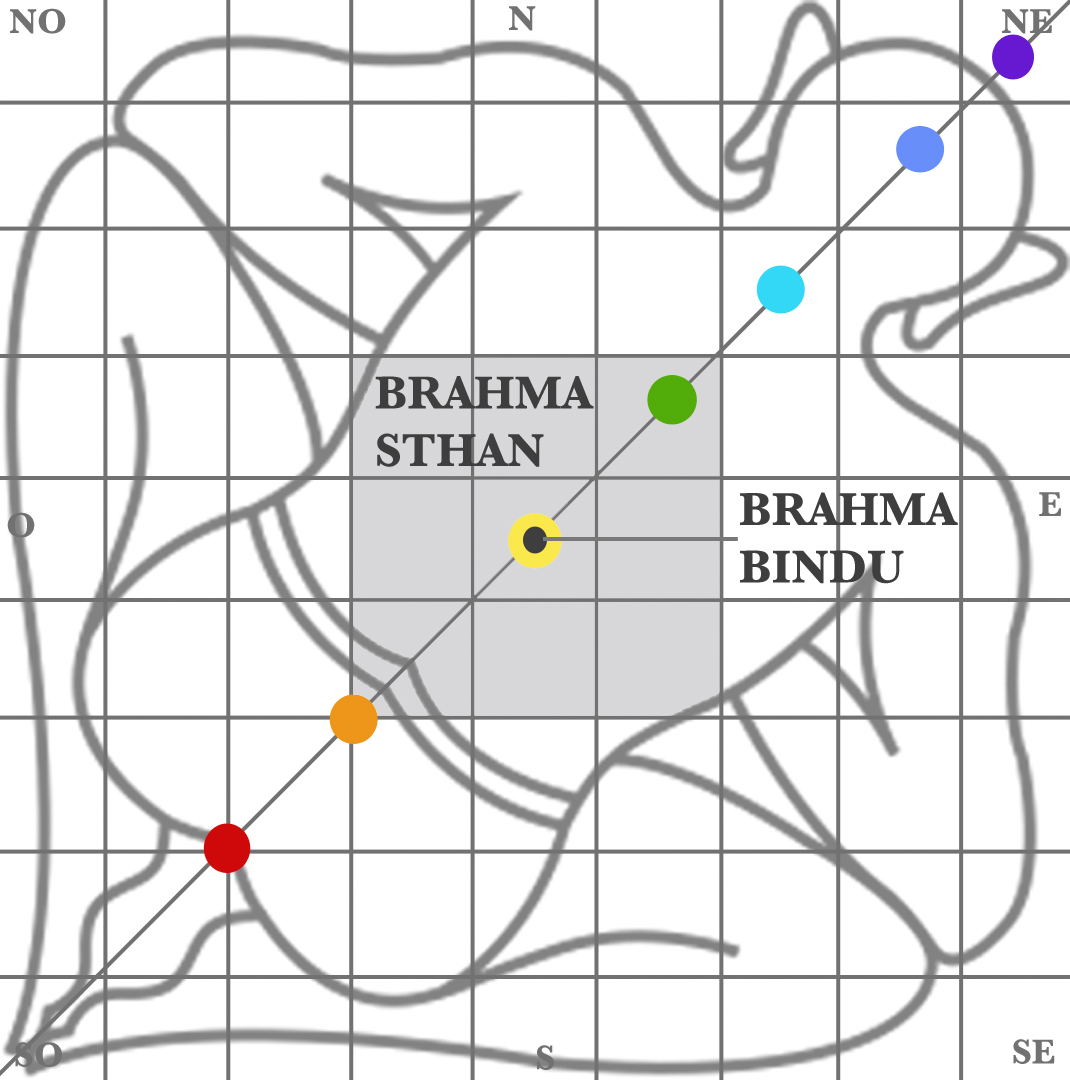Vastu Purush Positions
Vastu is the arrangement of space on the earth or land. This is vibrating and alive. This vibrant energy resides in the earth and is called by various names such as Bhoomi Purush, Vastu Naathan and Vastu Purush This is the energy of the material substance. When Vastu Purush is oriented towards the cardinal directions i.e. north, east, south and west, he is considered to be awake, and when oriented towards the angular directions like the northeast (NE), southeast (SE), southwest (SW). and northwest (NW), he is considered to be asleep.
The Vastu Purush is said to have three positions:
- Sthira Vastu
- Chara Vastu
- Nitya Vastu

Sthira Vastu
The positions of Vastu Purush along NE and SW are supposed to be his permanent body position. This is the most important Vastu position. It is the Sthira or permanent position of any construction for all seasons throughout the year. His head is on the NE, his right arm on the SE, his feet are on the SW and his left arm is on the NW.
Sthira Vastu is concerned with the construction of a house, temple, village etc and their performance. Most of the books on Vastu Shastra are written taking Sthira Vastu as the soul consideration. It is a one sided view. Most of the vastu principles of Sthira Vastu were carved to avoid the scorching rays of sun during the summer season. These principles don’t apply equally well during the winter season. Always remember, “What is one man’s meat is another man’s poison.” Thus comes the importance of other two positions of Vastu Purush.

Chara Vastu
Second type of Vastu is called Chara Vastu or moving body. The Vastu Purush lies on his side in one direction for full three months and keeps on rotating in a clockwise direction. it is clear from the above table that change of position of Vastu Purush is closely linked to the various seasonal change. Seasons change and so change the intensity of the forces in a span of one year. These seasonal changes, in turn, have great effect on human body. So happens with the body of Vastu Purush. Different seasons have different level and direction of panic forces. Ayurveda - the science of happy and long life - prescribes special diet for different seasons.
Apply the above table and you can reap the benefits of Vastu in the respective months. For example, north direction is most auspicious for you during the period approximately from second half of March to first half of June. Openings in the north direction - doors, windows and ventilators - should be kept open to reap the full benefit of Vastu. Face north while doing any auspicious work during these months.Follow the same principle for other months using their respective directions. East is auspicious during the rainy season (June to September), south is the most sought after direction during early winters (September to December) and we embrace west during harsh cold winters (December to March) to imbibe more and more of solar heat. During winters, it is natural to face sun to get its maximum heat through the four senses located on our face. Thus all the directions are auspicious depending upon our requirements of light and heat from time to time.
Chara Vastu is useful for the construction of shivira (temporary residence of army), tents, temporary banquet halls, moving circus shows, religious gatherings, stage for ramleela, rasleela or dramas. This construction is done only for a maximum time period of three months.
Nitya Vastu
It refers to daily movement of VastuPurush. The gaze of VastuPurush changes every three hours in a day, He completes one full rotation of 360° in a day, remaining for three hours each in all of the eight directions. Human mind and body also undergo changes on a daily cycle basis. The energy and alertness of mind reaches its lowest peak when we go to bed.
A sunflower always faces the sun. A human being should do the opposite. During hot noon hours, he should face the cold direction. Even while sleeping, he should sleep keeping his face (head) towards the south because sun is in the north during midnight hours.


